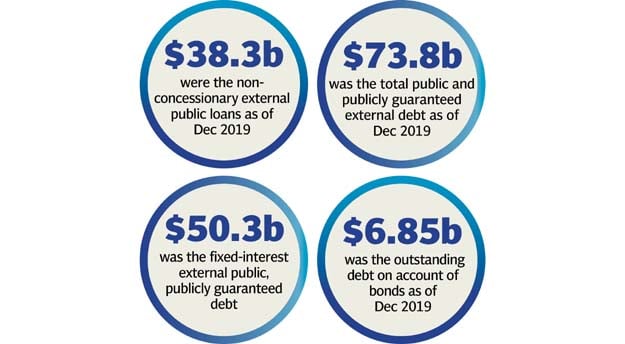Pakistan further delays launch of $3b Eurobonds
Move comes due to spike in interest rates, refinancing risks of external debt

A Reuters representational image.
The government has now decided to delay the launch at least till the end of current fiscal year as it meets financing needs through short-term expensive foreign commercial loans and hot foreign money, being invested in the government debt securities.
“Due to availability of low cost external inflows from multilateral and bilateral sources, the government decided to issue Eurobonds later in the financial year,” said the Ministry of Finance in response to a question sent by The Express Tribune.
The Pakistan Tehreek-e-Insaf (PTI) government has not yet tested the international capital market and has been delaying the launch of sovereign bonds, including Panda Bonds which it wants to float in China.
In budget estimates, the government had planned to raise $3 billion by floating sovereign bonds in fiscal year 2019-20. In the last fiscal year too, the government had also estimated raising $3 billion by floating sovereign bonds but dropped the plan due to delay in signing the International Monetary Fund (IMF) bailout programme.
The finance ministry had planned to launch at least $1 billion worth of Eurobonds in November but deferred the launch till the third quarter of current fiscal year. Now, it has further delayed the launch towards the later part of the fiscal year.
Government documents showed that during the past one year key external public debt-related indicators deteriorated due to overreliance on floating interest rate and expensive loans obtained from foreign commercial banks and the Asian Development Bank (ADB).
Non-concessionary external public loans amounted to $29 billion or 45% of the total public and publicly guaranteed debt by December 2018. However, these increased to $38.3 billion or 52% of the total external public debt as of December 2019, according to the Ministry of Finance statistics. There was a 7% increase in the share of expensive loans within a year, which was a worrisome trend.

The total public and publicly guaranteed external debt was $64.4 billion in December 2018, which jumped to $73.8 billion by December 2019. The entire increase was on account of non-concessionary loans, according to official statistics.
However, the finance ministry believes that the expensive loans acquired by Pakistan were a sign “of economic strength”.
“A gradual decrease in reliance on concessionary debt is a sign of economic strength of the country and the fact that Pakistan is no longer categorised by multilateral institutions as a low-income country,” said the finance ministry. The World Bank has clubbed Pakistan with “blend countries” that are not eligible for only concessionary lending.
However, the surge in foreign expensive loans was not because of the World Bank categorisation whose lending in the past one year remained almost stagnant. There was an increase of only $143 million in the World Bank lending that surged to $15.4 billion by December 2019.
The real reason for the 7% increase in the share of expensive foreign loans was heavy reliance on commercial loans, ADB’s new $2-billion financing and $3 billion worth of Chinese SAFE deposits, showed the official statistics.
For the first time in history, Pakistan has secured emergency crisis loan from the ADB.
The finance ministry documents showed that the share of fixed-interest external public and publicly guaranteed debt decreased 4.2% in just one year. In December 2018, the fixed-rate external public debt stood at $46.5 billion, which was equal to 72.2% of the $64.4-billion public debt.
This share decreased to 68% despite the fact that the total fixed-interest external public debt surged to $50.3 billion by December 2019.
The share of debt based on floating interest rates increased to 32%, which stood at $23.5 billion by December 2019. The increase was because of inclusion of $3 billion of Chinese SAFE deposits in the public debt, more commercial loans and the ADB’s new lending to Pakistan.
The ADB’s floating-interest debt to Pakistan surged from $5.5 billion to $6.6 billion by December 2019.
“As long as the floating-rate debt is within a reasonable range, it does not imply a higher risk,” stated the Ministry of Finance.
In the past one year, the share of commercial bank loans in the total external public debt jumped from 11.6% to 13.8%. Total outstanding commercial loans stood at $7.5 billion in December 2018, which have, for the first time, almost touched $10 billion. Contrary to this trend, the outstanding debt on account of bonds was $7.3 billion in December 2018, which has now decreased to $6.85 billion.
Published in The Express Tribune, February 27th, 2020.
Like Business on Facebook, follow @TribuneBiz on Twitter to stay informed and join in the conversation.



















COMMENTS
Comments are moderated and generally will be posted if they are on-topic and not abusive.
For more information, please see our Comments FAQ